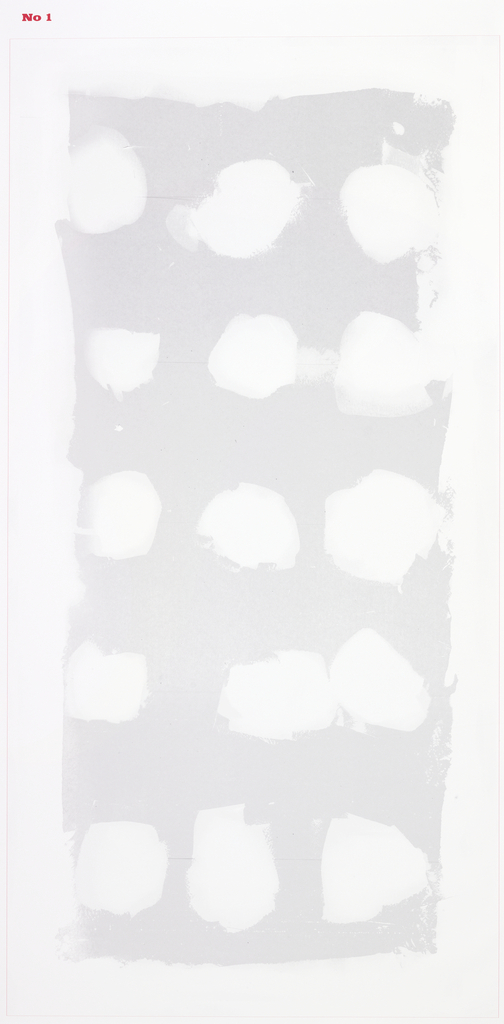This is the first panel from the set of ten wallpapers showing a realistic rendering of a 4×8 foot sheet of drywall, all prepped and awaiting its final surface coating. To achieve this high degree of realism, Fischer entered an actual construction site and painstakingly photographed ten different drywall panels. The exacting photography and follow-up Photoshop work is enhanced by the digital printing which allows the wallpaper to pick up minute details making it nearly impossible to distinguish the wallpaper from actual drywall. From the marking of the drywall with graphite, to the application and smoothing of the joint compound, to the miscellaneous smudges and fingerprints, every detail is caught in this hyper-realistic depiction. The wallpaper is unpretentious and exudes confidence, and Fischer’s ability to capture the raw beauty of this material elevates drywall to a new level.
The Drywall wallpaper makes a nice compliment to the group of trompe l’oeil or faux finish papers in the museum collection. Since its invention wallpaper has frequently been designed to imitate other materials, and historically has copied materials deemed more luxe such as exotic hardwoods, precious metals or stone, embossed leather, or exquisite woodwork or draperies. Faux finish wallpapers were used to replace these materials when they were not available in the quantities necessary, could not be manipulated in the desired fashion, or when use of the original was cost prohibitive. It is only during the twentieth century that wallpapers began imitating more common surfaces, and this was usually done as a cost-effective measure, such as wood grain papers imitating paneling. It is most unusual for wallpaper to imitate a lesser surfacing material. For the Drywall wallpaper, Fischer is copying a much more base material, used in the construction of most buildings but always covered by surfacing materials deemed more appropriate to a finished interior.
